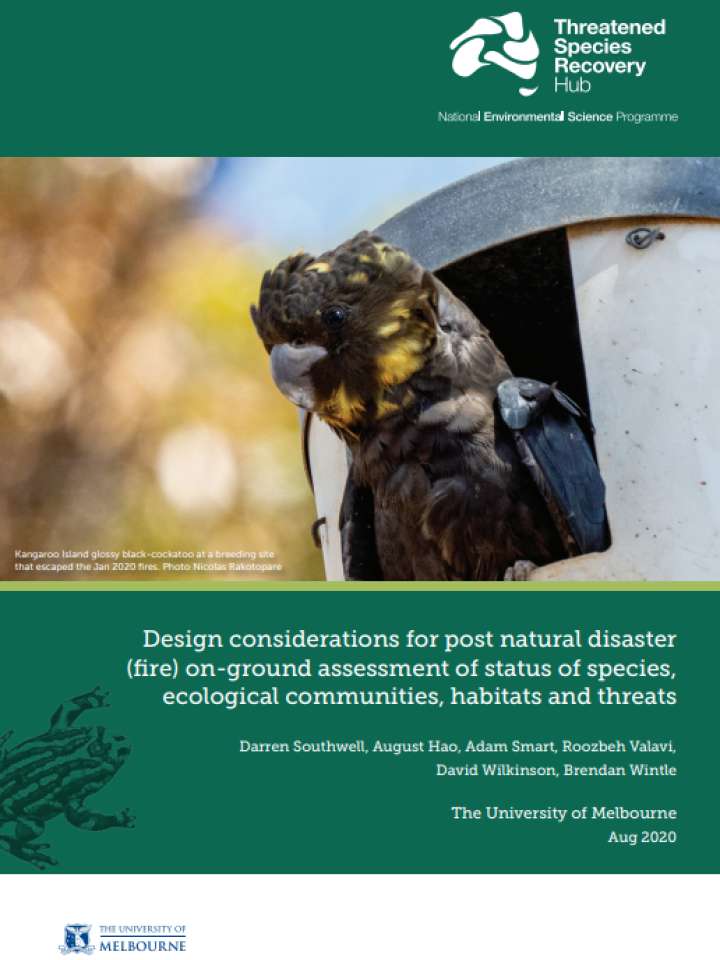Design considerations for post natural disaster (fire) on-ground assessment of status of species, ecological communities, habitats and threats
The purpose of this document is to highlight design considerations for conducting post-fire reconnaissance surveys to assess fire severity, habitat condition and threats, as well as the status of priority threatened species and ecological communities listed by the federal Government as most vulnerable to the 2019-20 wildfires. The document consists of five parts.
Section 1 reviews the published literature to discuss general survey design considerations when conducting surveys following large, unplanned fires. Section 2 provides more specific survey guidelines for federally listed priority species (birds, mammals, frogs, reptiles, fish, crayfish) specifically, the preferred sampling methods, the optimal timing of surveys, preferred habitat and the minimum survey effort. Section 3 provides a brief summary of general survey methods for sampling these species with reference to existing guidelines. Section 4 lists species that are already the focus of post-fire reconnaissance surveys across Australia. Finally, section 5 develops species distribution models (where possible) for priority vertebrates and crayfish, and presents the results of a spatial prioritisation to identify regions for new post-fire surveys.
